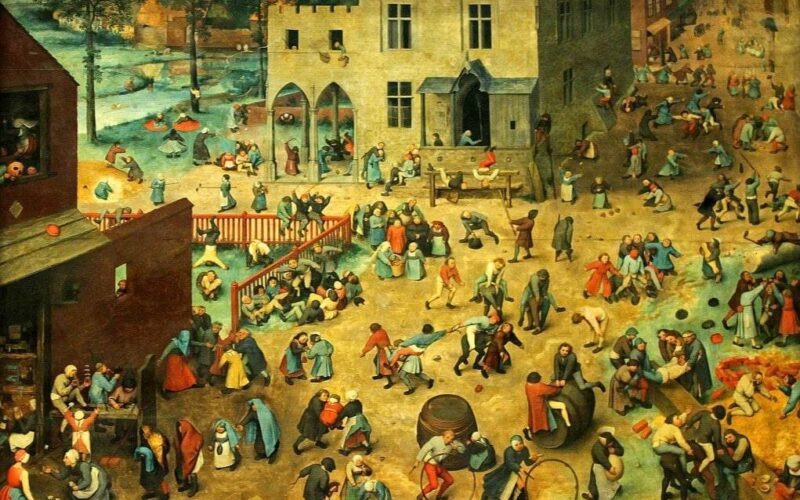From a young age, my initiation into the world of painting took place among the pages of illustrated books that filled the shelves of our home library, a treasure trove of knowledge and beauty that my father, himself a painter, had carefully curated. I was around six or seven years old when I discovered the joy of lying on my bed, picking up a volume dedicated to a renowned painter or an exhibition catalog, and letting myself be transported into the adventures depicted on those pages.
Among my favorites were the Flemish landscapes, full of that dark and mysterious charm where dramatic episodes unfolded: a boat struggling against tumultuous waves, scenes of daily life with shepherds, soldiers, and travelers bringing those places to life with rich visual narratives.
Canaletto, with his Venetian vedutism, was another of my childhood heroes. His works transported me to an almost fairy-tale world, where the masks and canals of Venice played the role of streets in an aquatic city, an image I could hardly encounter in everyday reality.
And then there were the Bruegels, from Pieter Bruegel the Elder to Pieter Brueghel the Younger. Their works were a nursery of intricate and bizarre situations that continuously fueled my imagination. I invented and lived countless stories, navigating through the details of those canvases that represented life with unparalleled vividness and complexity.
Recently, while casually browsing online, I stumbled upon one of those paintings that colored the days of my childhood. In a surge of nostalgia, I decided to take a moment to relive those past sensations, focusing on the details of the painting and inviting readers to join me in this game of discovery.
This time, I won’t offer a technical or historical analysis of the work but rather a purely emotional approach. I want to share with you the joy of exploring “Children’s Games” by Pieter Bruegel the Elder, painted in 1560. A work that captures the joyful and complex essence of childhood through a myriad of depicted games.
I invite anyone who recognizes some of the games portrayed in the painting to share their names. I will gradually update this article, enriching it with your valuable contributions. In this way, we not only explore art together but also recreate those emotional connections that only a work of art can evoke.












